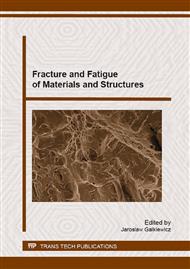p.139
p.145
p.151
p.157
p.163
p.169
p.175
p.182
p.191
Stress Intensity Factor Calculation by Smoothed Finite Element Method
Abstract:
Accuracy of stress intensity factor (SIF) determination by three types of smooth finite element method (namely, ES-FEM, NS-FEM and α-FEM) has been investigated. Two types of simple benchmark problems (uniaxial tension of the specimens with central and edge cracks) have been considered. SIF values were calculated by virtual crack extension and modified crack closure integral methods on almost uniform meshes. It has been shown that utilizing of ES-FEM and α-FEM significantly improves accuracy of the results compared with the traditional FEM.
Info:
Periodical:
Pages:
163-168
Citation:
Online since:
April 2016
Authors:
Price:
Сopyright:
© 2016 Trans Tech Publications Ltd. All Rights Reserved
Share:
Citation:


